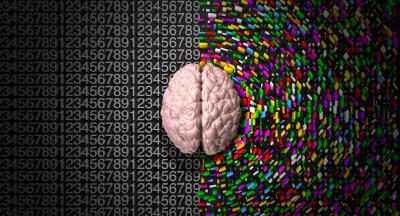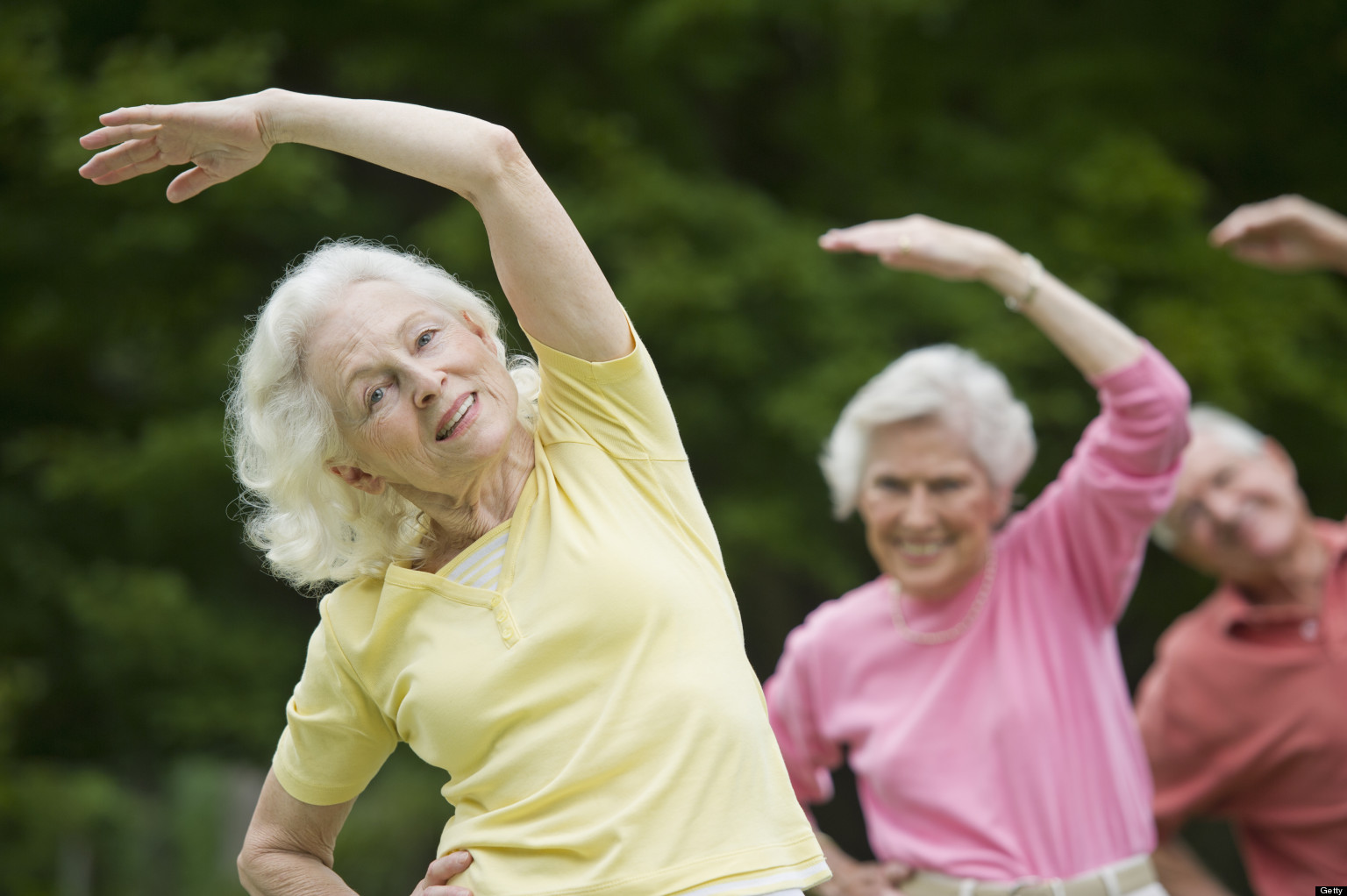Blog
- Bilateral Communication Increases in Older Adult Brain
- By Jason von Stietz, M.A.
- September 29, 2017
-

As the human brain ages, how does it manage to continue doing what we need it to do? A recent study found that the brain of an older adult compensates by increasing bilateral communication during a task. The study was discussed in a recent article in MedicalXpress:
The aged brain tends to show more bilateral communication than the young brain. While this finding has been observed many times, it has not been clear whether this phenomena is helpful or harmful and no study has directly manipulated this effect, until now.
"This study provides an explicit test of some controversial ideas about how the brain reorganizes as we age," said lead author Simon Davis, PhD. "These results suggest that the aging brain maintains healthy cognitive function by increasing bilateral communication."
Simon Davis and colleagues used a brain stimulation technique known as transcranial magnetic stimulation (TMS) to modulate brain activity of healthy older adults while they performed a memory task. When researchers applied TMS at a frequency that depressed activity in one memory region in the left hemisphere, communication increased with the same region in the right hemisphere, suggesting the right hemisphere was compensating to help with the task.
In contrast, when the same prefrontal site was excited, communication was increased only in the local network of regions in the left hemisphere. This suggested that communication between the hemispheres is a deliberate process that occurs on an "as needed" basis.
Furthermore, when the authors examined the white matter pathways between these bilateral regions, participants with stronger white matter fibers connecting left and right hemispheres demonstrated greater bilateral communication, strong evidence that structural neuroplasticity keeps the brain working efficiently in later life.
"Good roads make for efficient travel, and the brain is no different. By taking advantage of available pathways, aging brains may find an alternate route to complete the neural computations necessary for functioning," said Davis.
These results suggest that greater bilaterality in the prefrontal cortex might be the result of the aging brain adapting to the damage endured over the lifespan, in an effort to maintain normal function. Future brain-stimulation techniques could target this bilateral effect in effort to promote communication between the hemispheres and, hopefully, engender healthy cognition throughout the lifespan.
Read the article Here
- Comments (0)
- Expressive Writing "Cools" The Worried Brain
- By Jason von Stietz, M.A.
- September 22, 2017
-

Getty Images It is often recommended that people write about their feelings. However, does writing calm a worried brain? Researchers at Michigan State University found that expressive writing frees cognitive resources and improves performance on a cognitive task. The study was discussed in a recent article in MedicalXpress:
The research, funded by the National Science Foundation and National Institutes of Health, provides the first neural evidence for the benefits of expressive writing, said lead author Hans Schroder, an MSU doctoral student in psychology and a clinical intern at Harvard Medical School's McLean Hospital.
"Worrying takes up cognitive resources; it's kind of like people who struggle with worry are constantly multitasking – they are doing one task and trying to monitor and suppress their worries at the same time," Schroder said. "Our findings show that if you get these worries out of your head through expressive writing, those cognitive resources are freed up to work toward the task you're completing and you become more efficient."
Schroder conducted the study at Michigan State with Jason Moser, associate professor of psychology and director of MSU's Clinical Psychophysiology Lab, and Tim Moran, a Spartan graduate who's now a research scientist at Emory University. The findings are published online in the journal Psychophysiology.
For the study, college students identified as chronically anxious through a validated screening measure completed a computer-based "flanker task" that measured their response accuracy and reaction times. Before the task, about half of the participants wrote about their deepest thoughts and feelings about the upcoming task for eight minutes; the other half, in the control condition, wrote about what they did the day before.
While the two groups performed at about the same level for speed and accuracy, the expressive-writing group performed the flanker task more efficiently, meaning they used fewer brain resources, measured with electroencephalography, or EEG, in the process.
Moser uses a car analogy to describe the effect. "Here, worried college students who wrote about their worries were able to offload these worries and run more like a brand new Prius," he said, "whereas the worried students who didn't offload their worries ran more like a '74 Impala – guzzling more brain gas to achieve the same outcomes on the task."
While much previous research has shown that expressive writing can help individuals process past traumas or stressful events, the current study suggests the same technique can help people – especially worriers – prepare for stressful tasks in the future.
"Expressive writing makes the mind work less hard on upcoming stressful tasks, which is what worriers often get "burned out" over, their worried minds working harder and hotter," Moser said. "This technique takes the edge off their brains so they can perform the task with a 'cooler head.'"
View the article Here
- Comments (0)
- Dancing Improves Brain Health in Older Adults
- By Jason von Stietz, M.A.
- September 14, 2017
-

Getty Images Most people have heard that exercise is good for the brain? However, what are the benefits of dancing? A recent study found that a dance program involving teaching older adults a new dance move each session led to not only increases in hippocampal volume but also improvements in maintaining postural control/balance. The study was discussed in a recent article in Medical Express:
"Exercise has the beneficial effect of slowing down or even counteracting age-related decline in mental and physical capacity," says Dr Kathrin Rehfeld, lead author of the study, based at the German center for Neurodegenerative Diseases, Magdeburg, Germany. "In this study, we show that two different types of physical exercise (dancing and endurance training) both increase the area of the brain that declines with age. In comparison, it was only dancing that lead to noticeable behavioral changes in terms of improved balance."
Elderly volunteers, with an average age of 68, were recruited to the study and assigned either an eighteen-month weekly course of learning dance routines, or endurance and flexibility training. Both groups showed an increase in the hippocampus region of the brain. This is important because this area can be prone to age-related decline and is affected by diseases like Alzheimer's. It also plays a key role in memory and learning, as well as keeping one's balance.
While previous research has shown that physical exercise can combat age-related brain decline, it is not known if one type of exercise can be better than another. To assess this, the exercise routines given to the volunteers differed. The traditional fitness training program conducted mainly repetitive exercises, such as cycling or Nordic walking, but the dance group were challenged with something new each week.
Dr Rehfeld explains, "We tried to provide our seniors in the dance group with constantly changing dance routines of different genres (Jazz, Square, Latin-American and Line Dance). Steps, arm-patterns, formations, speed and rhythms were changed every second week to keep them in a constant learning process. The most challenging aspect for them was to recall the routines under the pressure of time and without any cues from the instructor."
These extra challenges are thought to account for the noticeable difference in balance displayed by those participants in dancing group. Dr Rehfeld and her colleagues are building on this research to trial new fitness programs that have the potential of maximizing anti-aging effects on the brain.
"Right now, we are evaluating a new system called "Jymmin" (jamming and gymnastic). This is a sensor-based system which generates sounds (melodies, rhythm) based on physical activity. We know that dementia patients react strongly when listening to music. We want to combine the promising aspects of physical activity and active music making in a feasibility study with dementia patients."
Dr Rehfeld concludes with advice that could get us up out of our seats and dancing to our favorite beat.
"I believe that everybody would like to live an independent and healthy life, for as long as possible. Physical activity is one of the lifestyle factors that can contribute to this, counteracting several risk factors and slowing down age-related decline. I think dancing is a powerful tool to set new challenges for body and mind, especially in older age."
This study falls into a broader collection of research investigating the cognitive and neural effects of physical and cognitive activity across the lifespan.
Read the article Here
- Comments (0)


 Subscribe to our Feed via RSS
Subscribe to our Feed via RSS